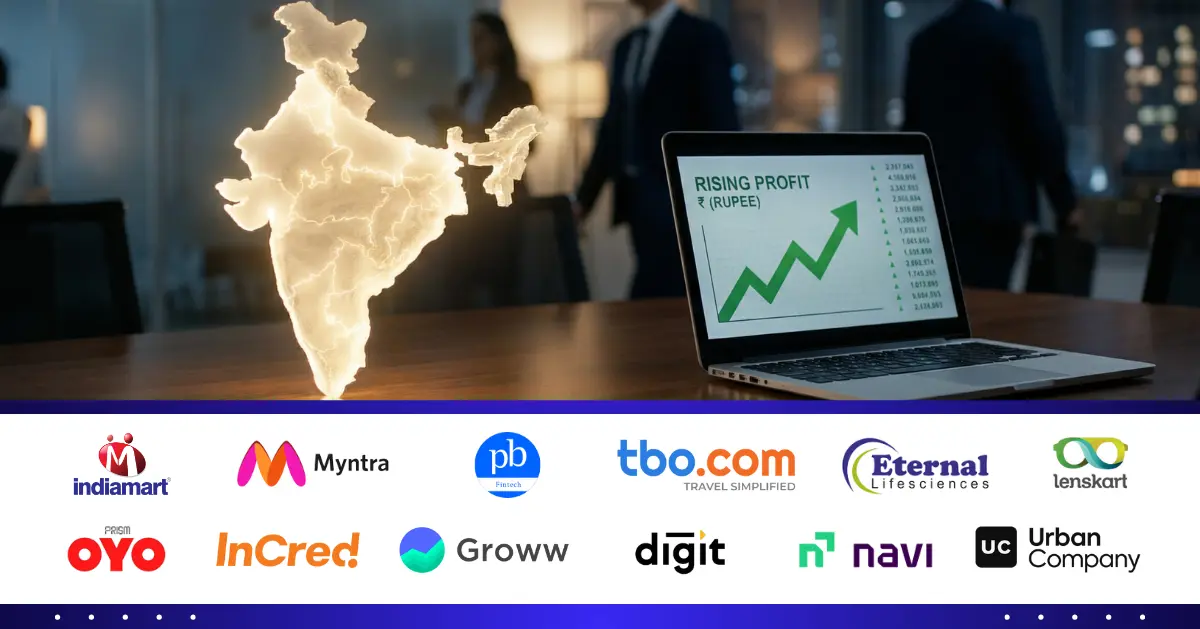
Introduction
Crowdfunding has emerged as a game-changing method of capital raising in recent years. Traditionally, businesses would rely on venture capital, loans, or angel investors to fund their operations. However, it has democratized this process, enabling small businesses, startups, and even social enterprises to tap into a global pool of backers. This approach not only provides the much-needed funds but also facilitates market validation, making it easier for entrepreneurs to gauge the demand for their ideas before they commit large amounts of resources. By the end of this article, you will understand how crowdfunding works, its various types, the top platforms to use, legal considerations, and strategies for running a successful campaign.
Read blog: A Complete Analysis of Startup India Registration
What is Crowdfunding?
Crowdfunding is a method of raising capital by collecting small financial contributions from a large number of people, typically through an online platform. The idea is to gather funds from a broad group of people who are interested in supporting a project or startup idea. This collective funding model enables individuals to invest in or donate to a business without the need for large, traditional investments. It’s a particularly attractive option for startups, social enterprises, and creative projects that may not have access to traditional financing routes.
Crowdfunding has benefits for both entrepreneurs and backers:
- For Entrepreneurs: It allows businesses to secure early-stage funding, test their product ideas, and build a community around their brand.
- For Backers: It offers individuals the opportunity to be part of something new and innovative, sometimes with the potential for financial returns or rewards.
Types of Crowdfunding – Donation, Equity, Debt, and Reward-Based
Understanding the different collective funding models is critical for businesses when selecting the one that best aligns with their funding needs and goals. Below is a more detailed look at each model:
1.Donation-Based Crowdfunding:
In this model, individuals contribute money without expecting anything in return, other than perhaps a sense of contributing to a cause. It’s commonly used by charities, nonprofit organizations, or community-driven projects. Donation-based Peer-to-peer lending can be particularly effective for humanitarian, social, or community-driven projects that have a broader societal impact.
Example: Many nonprofits in India, such as those supporting education or disaster relief, have leveraged platforms like Ketto or Milaap to raise funds for their causes.
2.Equity-Based Crowdfunding:
This model allows backers to invest in a company in exchange for ownership shares. As an investor, backers receive equity (shares in the company) and can potentially earn a return on investment if the business grows. This is a great model for startups looking for significant capital and willing to share ownership with a wide base of investors.
Example: A startup in the tech industry might offer equity stakes in exchange for investment, allowing investors to become part-owners and benefit from the future success of the company.
3.Debt-Based Peer-to-peer lending (P2P Lending):
Peer-to-peer (P2P) lending allows businesses to borrow funds directly from individual lenders, typically at competitive interest rates. This model is attractive to businesses that need capital but are not interested in giving up equity. It’s a less risky method for entrepreneurs who want to maintain full control over their businesses but still require financial support to grow.
Example: A small manufacturing business might use a P2P platform to borrow funds for equipment without involving traditional banks.
4.Reward-Based Crowdfunding:
In this model, backers receive non-financial rewards in exchange for their contributions. These rewards could be products, services, or exclusive access. Reward-based crowdfunding is especially popular among startups in the tech, fashion, and creative industries, allowing companies to generate interest and capital before launching their product.
Example: A startup developing a new smartphone app may offer early access to the app or exclusive features as rewards to backers who contribute during the Peer-to-peer lending campaign.
How It Works for Startups and Businesses
It offers a unique opportunity for startups and small businesses to secure funds without the complexities of traditional fundraising methods. Here’s a more comprehensive step-by-step breakdown of how the process works:
- Project Presentation:
To kick off a peer to peer lending campaign, entrepreneurs need to present their project or business idea clearly and effectively. This typically involves creating a compelling narrative, sharing details about the business or product, and explaining how the funds will be used. Visual elements like videos, images, and prototypes play a crucial role in showcasing the business and making it more appealing to potential backers. - Setting Funding Targets:
A successful Peer-to-peer lending campaign requires clearly defined funding targets. These targets should reflect the minimum amount needed to achieve specific business milestones, such as product development, market expansion, or launching a marketing campaign. Setting realistic goals can help create a sense of urgency and motivate backers to contribute. - Campaign Promotion:
After launching the campaign, it is essential to actively promote it to a wide audience. Entrepreneurs often use a combination of social media marketing, email newsletters, influencer collaborations, and paid advertising to amplify the reach of their campaign. The more exposure the campaign gets, the more likely it is to reach funding goals.
Top Crowdfunding Platforms in India and Worldwide
Crowdfunding platforms act as intermediaries, connecting businesses with potential backers. The choice of platform is crucial, as each one offers unique features and caters to different types of campaigns. Here are some popular platforms:
- In India:
- Ketto: Focused on both charity-based and entrepreneurial collective funding, Ketto is one of India’s largest crowdfunding platforms. It’s widely used for personal and social cause fundraising.
- Milaap: Known for raising funds for social causes, education, and medical needs, Milaap also supports businesses looking for funding.
- Wishberry: A rewards-based Peer-to-peer lending platform that supports creative projects such as films, music, and art.
- Globally:
- Kickstarter: One of the largest crowdfunding platforms in the world, Kickstarter focuses on creative projects like arts, design, technology, and more. It has been instrumental in launching successful startups.
- Indiegogo: A platform similar to Kickstarter, but with more flexibility in the types of projects it allows. It supports both reward-based and equity Peer-to-peer funding.
- SeedInvest: A leading equity crowdfunding platform that allows startups to raise capital by offering equity shares in exchange for investments.
Legal and Compliance Aspects
It offers numerous opportunities for business growth, there are important legal and regulatory considerations to keep in mind, particularly regarding equity and debt-based campaigns.
In India, businesses must comply with regulations set forth by the Securities and Exchange Board of India (SEBI) for equity crowdfunding. This ensures that the rights of investors are protected and that there is transparency throughout the process. For debt-based campaigns, businesses must adhere to the guidelines established by the Reserve Bank of India (RBI).
Entrepreneurs should also ensure that their Peer-to-peer lending platform complies with Indian financial laws, including data protection and consumer protection regulations. Consulting with a legal expert before launching a campaign is a prudent step to avoid legal pitfalls.
Tips for Running a Successful Campaign
Running a successful crowdfunding campaign involves more than just setting up a project page. It requires thoughtful planning, consistent effort, and effective strategies. Here are some tips to maximize the impact of your Peer-to-peer funding campaign:
- Create a Compelling Story:
People are more likely to contribute when they feel emotionally connected to a story. Clearly explain your vision, why your project matters, and how backers’ contributions will make a difference. - Set Realistic Goals:
Setting achievable funding targets is crucial. Campaigns with smaller, incremental goals tend to be more successful because they create a sense of progress and accomplishment. - Engage Your Backers:
Keep your supporters in the loop with regular updates, personal thank-yous, and behind-the-scenes content. Engaged backers are more likely to share your campaign with others, broadening its reach. - Leverage Social Media and Marketing:
Don’t rely solely on the Peer-to-peer lending platform’s traffic. Use social media channels like Facebook, Instagram, and Twitter to create buzz and drive traffic to your campaign. - Offer Attractive Rewards:
For reward-based campaigns, ensure that your rewards are desirable and clearly defined. Offering tiered rewards can also encourage higher contributions.
Conclusion
Crowdfunding is not just a way to raise money—it’s a powerful tool that enables businesses to grow, validate their ideas, and build a community of loyal supporters. Whether you’re seeking capital for a social enterprise, tech startup, or creative project, it provides a versatile alternative to traditional funding methods. By understanding the different models of Peer-to-peer lending, leveraging top platforms, and ensuring legal compliance, businesses can unlock immense potential for growth.
RegisterKaro is here to simplify the process of capital raising and help you navigate the complexities of business finance. Visit our services page for more insights on how we can assist you in your crowdfunding journey.




